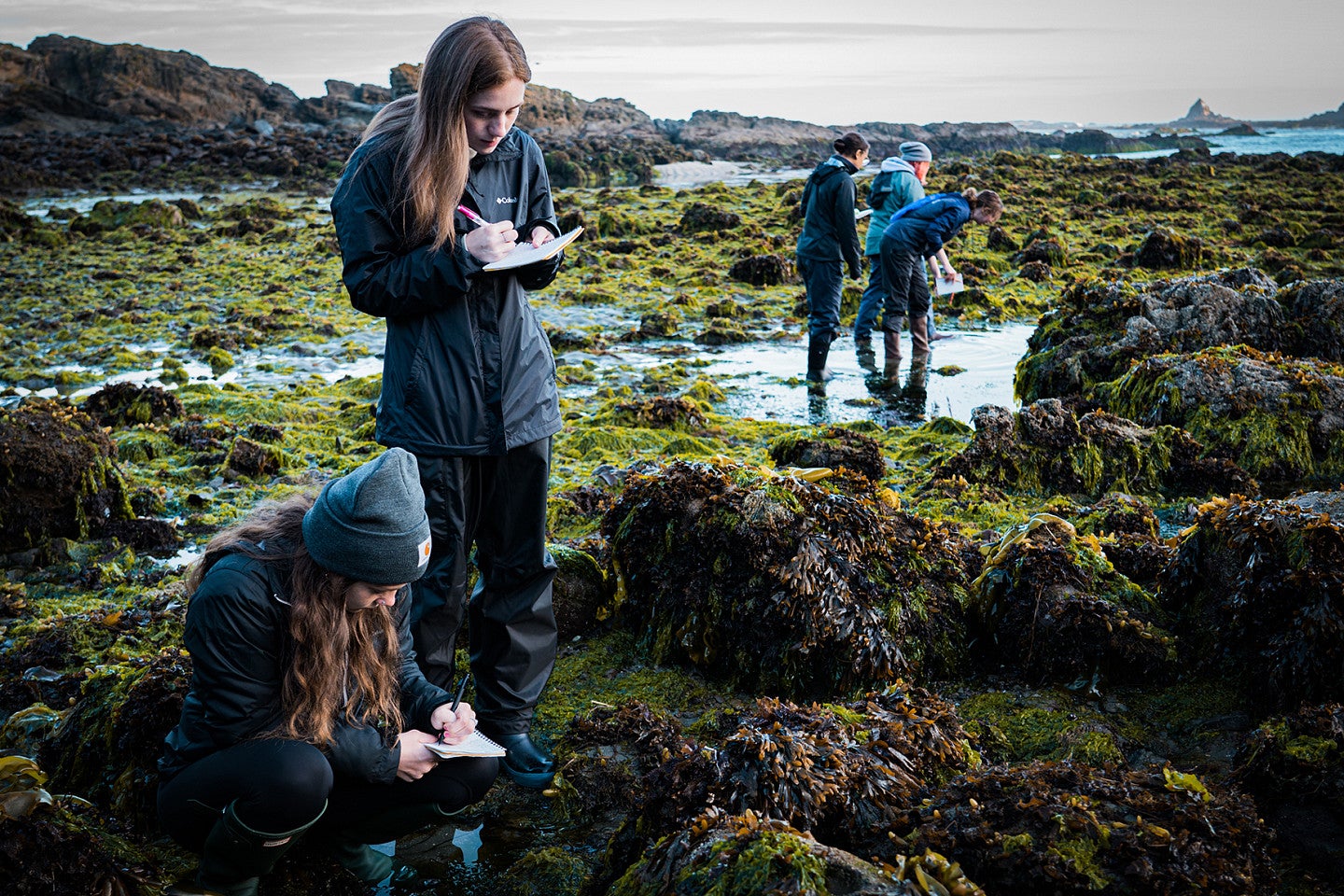
Letters to the Editor: Wildfire inaccuracies and marine biology kudos
Criticism of “inaccurate” feature on wildfire filmmaker and praise for the Oregon Institute of Marine Biology
Photo by Kelley Christensen• December 4, 2022
4 min readWildfire Story Missed the Mark
I am among the survivors of the Oregon Beachie Creek Fire (now named the Santiam Fire) in Gates, September 7, 2020. In “An Elemental Approach to Wildfire” (Autumn 2022), a glib accounting of the fatal devastation, Oregon Quarterly asserts inaccurate things.
The article quotes alumnus and wildfire filmmaker Trip Jennings, whose thinking about wildfire changed after a conversation with a scientist about prescribed burns: “So the solution has to come from the home out, and that’s what the science says.” What is the science? My completely burned home had attic screening, state-of-the-art window glass, new roof, hardscape all around, and was sheathed in HardiPlank siding, a concrete-based product that didn’t burn (just as advertised); it just crumbled.
The article asserts: “ . . . but the two percent of fires that can’t be controlled cause rampant damage and loss of life.” An apt definition of the conflagration that was Oregon’s wildfires, which firefighters are minuscule in defeating. Prescribed burns are exactly what should be implemented policy, thanks to the wisdom and heritage of our indigenous ancestors, but they are resisted by government. But even that would not have protected communities from the inferno these wildfires became in 2020.
In the pending class action lawsuit against PacifiCorp, parent company of Pacific Power, alleging negligence in not de-energizing downed power lines, this conflagration is described as an historic wind event, with extremely dry fuel. The result was unprecedented in intensity and destructiveness. The Santiam Wildfire was no ordinary wildfire or forest or house fire. Wildfires are so named because they are unpredictable, propelled by wind vagaries, reaching incredible temperatures, vaporizing glass, melting aluminum, twisting steel roofing, refrigerators, furnaces, wood-burning stoves into the earth. This describes my home after the fire.
The article quotes Jennings: “What we need to do is think about the values that are most important to us . . . and that’s homes, communities, and people.” Simplistic and naive and hardly a new idea or discussion. “We just have to have the will to do it.” This shows inexperience and a decided lack of research.
Besides all the misinformation, Oregon Quarterly, in publishing this article, missed the important opportunity to extend understanding, compassion, and a useful discussion about wildfires, the product of global warming.
Donna Preston Loveland, BA ’72 (psychology), MA ’73 (counseling)
Gates, Oregon
“Lucky and Forever Grateful”
I always look forward to receiving my Oregon Quarterly because it’s a reminder of how fortunate I was to have matriculated there. I grew up in Grants Pass in the forties and fifties. My mother had taught school briefly after graduating from college in North Dakota, but my father didn’t go beyond the eighth grade and was a house painter.
As an average kid without a scholarship, I worked summers pulling green chain in a lumber mill, set cable chokers behind caterpillar tractors taking logs to the landing, checked groceries, and stocked shelves at night for Safeway stores to earn money that covered my yearly tuition and fees. I graduated with a BS ’65 (general science), got a teaching certificate and then an MS ’71 from Arizona State University, and was the only child of six to get a college degree.
I lived in married student housing in the old Adair army barracks on Patterson Street when my youngest daughter was born, the same year I stepped from a class in geologic history to learn of President Kennedy’s assassination, and where I had witnessed the death of a friend the year before when part of the roof of Roosevelt Junior High School blew into our building during the Columbus Day storm in 1962. I live with these memories.
After a rewarding career teaching high school science classes I count myself both lucky and forever grateful for getting to spend my years at Oregon taking some amazing classes during a period when college tuition and fees at state schools made it possible for a poor kid to realize a dream and graduate from college with no debt.
Richard Thompson, BS ’65 (general science)
Prineville, Oregon
OIMB is World Class
My wife, Peggy, and I, along with fellow U of O alumni Alice Brooks and her husband, John, visited the Oregon Institute of Marine Biology August 30–31. The OIMB campus is truly an important asset to the university, the state, and the nation. We discovered there is an important heritage and legacy of the work done in Charleston, Oregon, for the field of marine life science and pioneering work in sea life research and discoveries in the reproduction cycle of microscopic marine life and their impact on higher life systems and the ecosystem. OIMB is indeed a legacy program, with all of the history and romance of the remote scientific research stations of the world, and it is truly world class. OIMB assets [include] the scientific discoveries, instructional and research opportunities, a marine life museum/aquarium, and more.
Tom Hudson, BBA ’71 (marketing)
Springfield, Oregon

